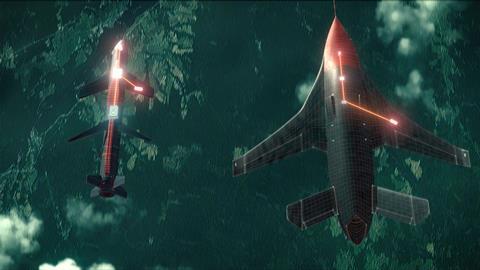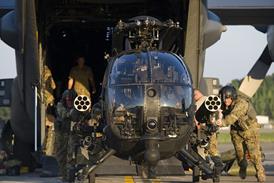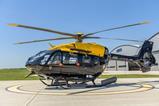Leonardo UK has launched its latest airborne electronic warfare (EW) product, with the BriteStorm payload to enable small unmanned air vehicles (UAVs) to perform stand-in jamming tasks such as targeting enemy integrated air defence systems.
Unveiled on 14 October at the US Army’s AUSA conference in Washington, DC, the new system is already involved in test and evaluation work, and could be ready to enter operational use as soon as next year.

Optimised for carriage by so-called attritable UAVs or launched effects, and with a system weight of 2.5kg (5.5lb) BriteStorm will deliver “high-powered interference against a wide spectrum of threats”, its developer says.
System elements include a miniature techniques generator, transmit/receive modules and antennae, with the capability drawing on the digital radio frequency memory technology employed by Leonardo UK’s operational BriteCloud active expendable decoy.
Use of the BriteStorm system could range from “barraging the enemy system with electronic noise”, to employing deception techniques such as “creating dozens of realistic ‘ghost’ fighter jet signatures, confusing and misdirecting the enemy response”, the company says.

“Historically, forces could rely on having air superiority within some of the conflicts that they were engaged with,” says Mark Randall, campaign manager electronic warfare, Leonardo UK. “However, the rise of peer-to-peer and near-peer threats and their increasingly sophisticated and advanced integrated air defence systems means that kind of ‘red’ threat bubble is increasingly expanding.”
This can result in a nation’s aircraft being placed inside an adversary’s missile engagement zone immediately after taking off from a home base, he notes.
Randall describes traditional stand-off and escort jamming assets as “crewed, large, expensive, strategic aircraft that are always in high demand – but never quite where you really need them”.
By contrast, an unmanned vehicle equipped with BriteStorm would be able to fly ahead of a formation. “You’re confusing and deceiving your enemies before they’ve received the return from your friendly forces,” he notes. “You’re providing a high level of protection to enable operational success.”
Developed in Luton, the UK, the BriteStorm technology has already undergone successful early testing.
“We’ve sold payloads to the Royal Air Force’s Rapid Capabilities Office, which has done synthetic ground and live flight trials and is pleased with the capability,” says Michael Lea, vice-president sales electronic warfare, Leonardo UK. “They’re able to share the results with their AUKUS partners [Australia and the USA], and we’ve got three payloads currently in the USA for trials and evaluation.”
In addition to targeting demand in the US market, Leonardo UK believes that BriteStorm will attract interest from potential customers in Europe, the Middle East, and the Asia-Pacific region. It notes that the technology – which is already in low-rate initial production at a payload-level – is “rapidly reprogrammable, to match the pace of the threat”.
“Coalition customers in the maritime and land domains also have to operate in these contested environments,” Lea says. “They are potentially having to fight a war where their adversary is sophisticated: it understands EW. This is a product that helps them operate to the best of their abilities.”
Separately, the UK company is seeing strong interest in its BriteCloud countermeasures system. The US Air National Guard in late 2022 made a fielding recommendation supporting its use with the Lockheed Martin F-16, and the Boeing F/A-18 is another potential candidate.
In June 2024, the technology also was identified as a possible future addition to the Lockheed F-35 stealth fighter, with the US Naval Air Systems Command outlining a need to acquire around 2,000 active expendable decoys for the type annually by late this decade.


































